HTC One - many new things in one phone
Within the framework of the “first glance” we examined in detail the exterior and hardware of the new flagship of the company, but it was still too early to judge the level of software implementation. At the moment, HTC One has already gone on sale and is widely represented in retail networks, so you can safely consider all aspects of the device, remaining behind the scenes.
NTS engineers work tirelessly to improve the software, and smartphones that are already released regularly receive minor updates to correct errors and improve usage experience. In particular, at the moment the most current official firmware is version 1.29, and all conclusions about the quality of the implementation of built-in functions will be valid for it.

')
First impressions of using HTC One were only positive. Of course, the early model can be forgiven for much, but even the pre-release unit did not seek to expend credit. With the release of the market and the beginning of official sales, it became finally clear that this is all the same interesting and original smartphone, worthy of close attention.
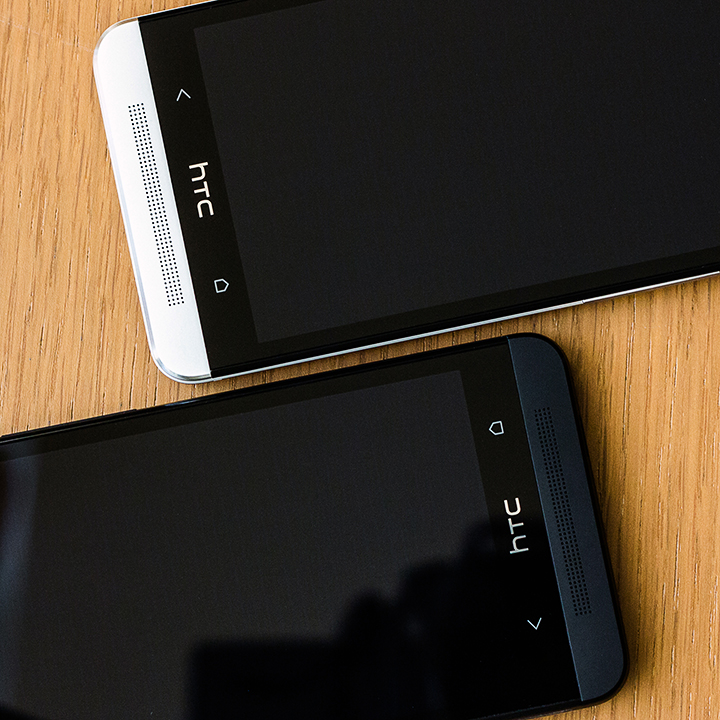
So, what lies behind the beautiful contours, practical metal body and a gorgeous 1080p display? In addition to the familiar to you filling, consisting of CPU Snadragon 600 @ 1.7 GHz, GPU Adreno 320 and 2 GB RAM, the device boasts a radically updated interface HTC Sense 5.0, which complements the Android OS 4.1.2.
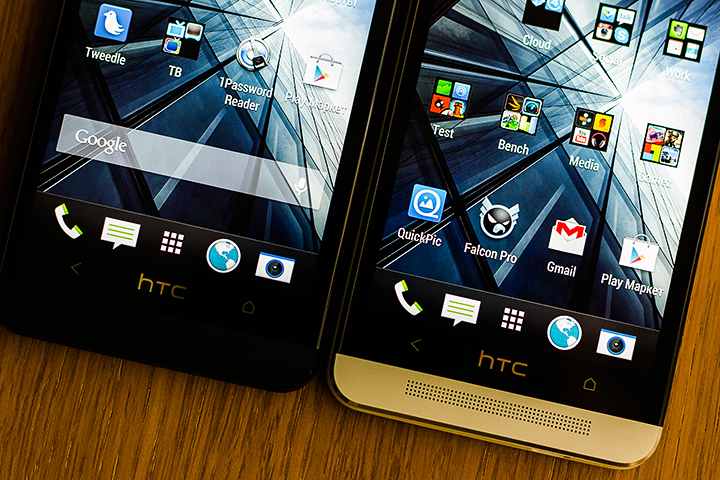
Frankly speaking, at first the innovations may seem unusual, and the traditional scenarios for using desktops are turned upside down, but if you only get a little inspiration from the developers' philosophy, everything falls into place. After all, a modern smartphone is not at all a tool for making and receiving calls, but a universal terminal for accessing the entire diversity of data around us every hour.
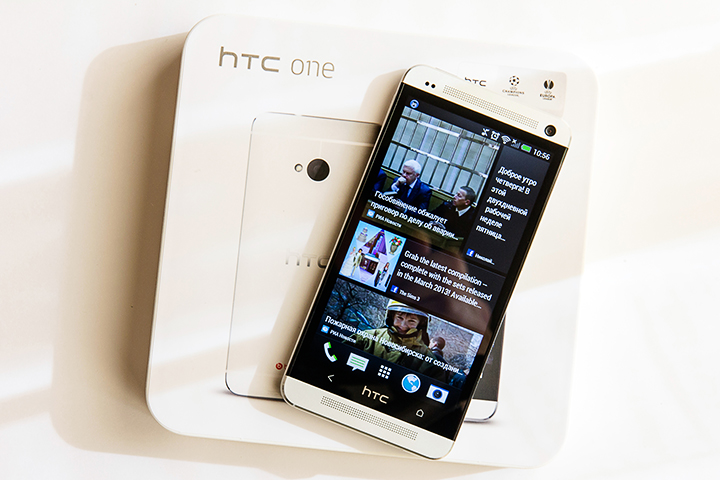
New NTS services are aimed precisely at keeping the distance from the user to the content to a minimum, without bothering him to “pull” the desired widgets to the desktops, adjust their size and other actions. As you probably guessed, this is a brand news feed HTC BlinkFeed. If the additional consumption of cellular traffic is undesirable - it is enough to transfer BlinkFeed to the update mode exclusively via Wi-Fi, and the set of news feeds can always be reconsidered. To return to the beginning with the brand clock widget and a beautiful weather icon, just double tap on the status bar. In the end, the start screen easily switches to the traditional desktop, if for some reason your preferences do not converge in favor of the new service.
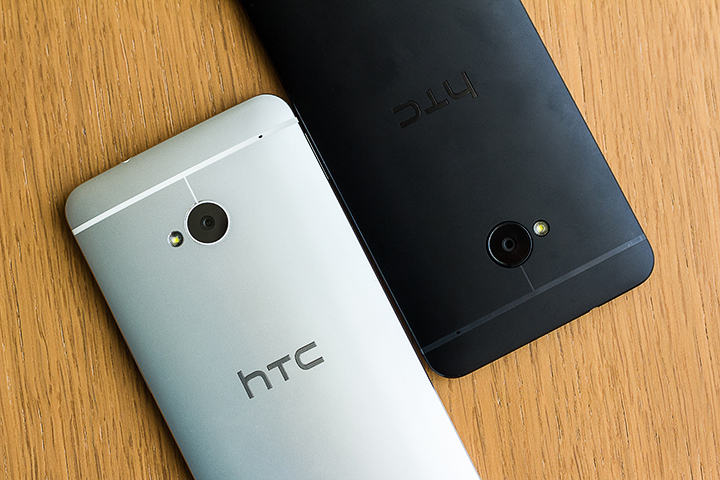
In addition to the customizable BlinkFeed, the list of sources depends on the region of residence, there are extremely interesting Zoe and HTC Share services on the HTC arm, whose work is based on the active use of the built-in camera.

Recently, the question often arises: why "ultra-pixels"? The fact is that the matrix pixels that are enlarged almost twice can capture up to 3.3 times more light, guaranteeing extremely interesting results in poor light. Despite the fact that the size of the back-illuminated sensor remained within the framework of the usual 1/3 ”, an increase in the pixel size to 2 μm makes itself felt, and the world's leading publications have already confirmed the impressive results.

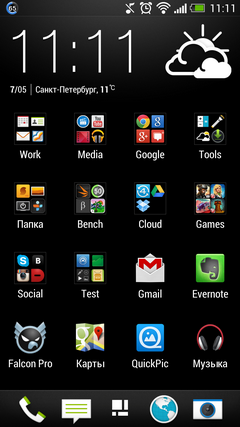
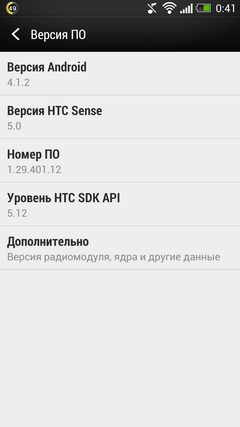
To reduce the effects of the inevitable “shake” when shooting with hands, the optical system of the HTC One is supplemented with an image stabilizer (OIS), so that you can not worry about the clarity of images, even in low light.

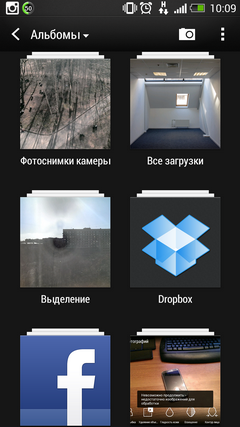
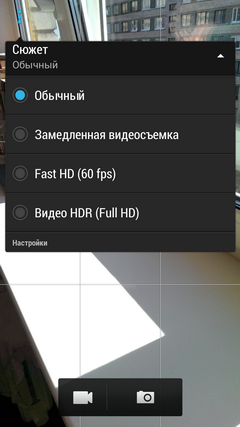
The camera interface complies with time-honored traditions, but individual items are striking and captivate with their novelty. In particular, One can record HDR video in 1080p quality at speeds of up to 30 frames per second, while HD movies can increase the frame rate to 60. The updated ImageChip 2 image processor is responsible for video encoding.
As in previous models, there is a slow-motion shot with a reduced output resolution, but it is much more interesting to shoot video in an extended dynamic range. In the end, it’s not embarrassing to bring such videos to the big TV screen, and the difference with the usual shooting mode, especially in backlit conditions, will not slow down affecting perception.
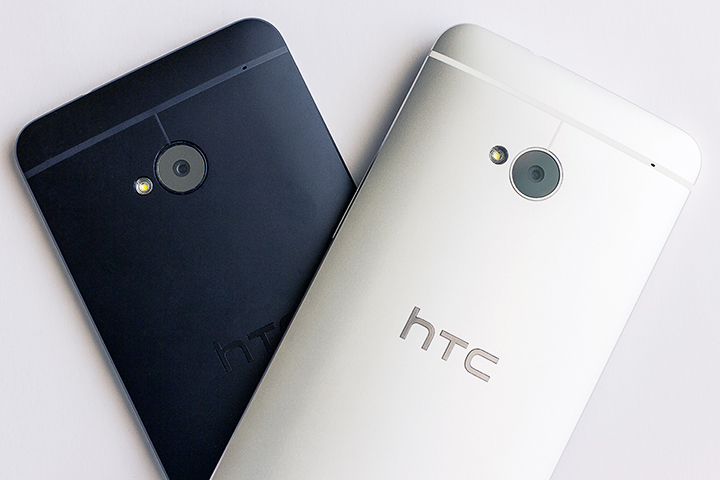
We attach examples of clips obtained using various shooting modes:
Main camera, 1080p @ 30 FPS: youtu.be/URXlviWzC-Q
Main camera, 1080p HDR @ 30 FPS: youtu.be/T2cBlaPNaeQ
Main camera, 720p @ 60 FPS: youtu.be/6kt4qZKJEJc
It should be noted the high quality of audio recording, possible due to the presence of two microphones and the subsequent program processing of the incoming sound. Perhaps, with the help of HTC One, you can record concerts as well, without subsequently experiencing frustration from overloads and wheezing on the audio track. Nevertheless, even the highest quality video does not enjoy such popularity as a regular photo. A good snapshot is easier to do, it takes up less space, and digital photography is much easier to share with friends.
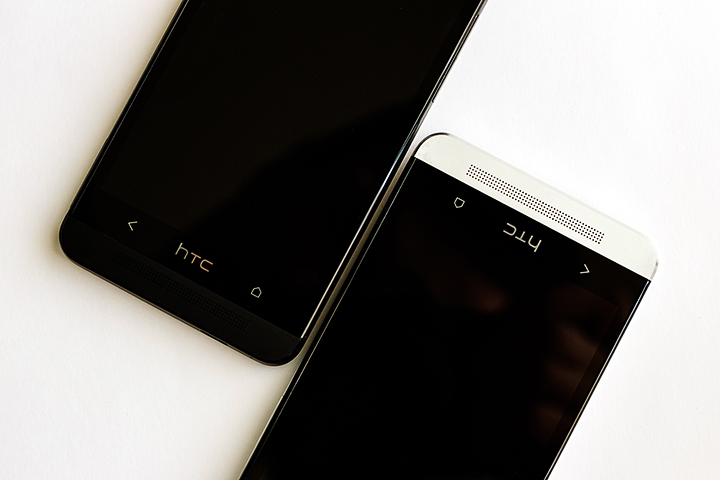
But sometimes there are moments that can be displayed only in motion. It was for such a case that the technology HTC Zoe was introduced, which allows literally “reviving” your photos, and with them - moments of life. To activate the Zoe mode, just press a separate button on the phone screen in the viewfinder mode and start the shooting process. In just a few seconds, the phone will capture 20 static frames and record a three-second video in 1080p-quality, linking everything that happens into a single and harmonious scene.
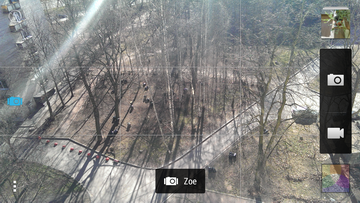

What is remarkable about this approach? Now you don’t need to force the burst mode and hold your finger on the shutter button (although this feature is also present). It is enough to choose what you would like to perpetuate, and the phone will do the rest. Moreover, a large amount of the original photo and video material will allow you to turn around at the editing stage, but this is a topic for another conversation.


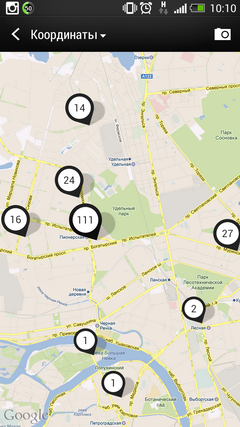
In order not to embarrass the user with a couple dozen of identical photos, all the pictures and the accompanying videos are automatically grouped in the standard Gallery application. Most of all it looks like a newspaper with live photos - an essential attribute of popular books about the boy wizard. Moreover, if you abstract from the usual albums and switch to the “Events” view, the HTC One will combine all your forays and adventures according to the shooting dates, without forgetting to display geotag data on the map.
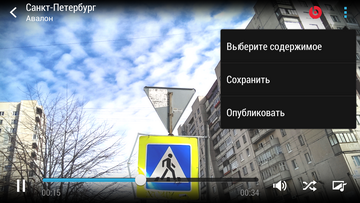
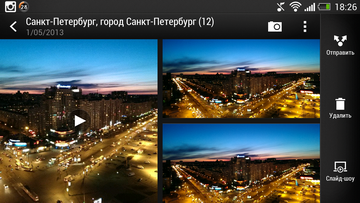
The logical end of the process are the colorful videos created by the phone without your participation. If necessary, the composition of the source data can be set manually, but sometimes it is much more pleasant to trust the clever mechanism that magically makes up a fancy mosaic of videos, pictures and special effects, and all this with great music!
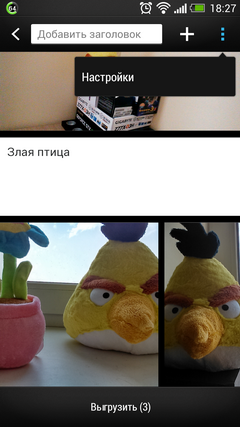
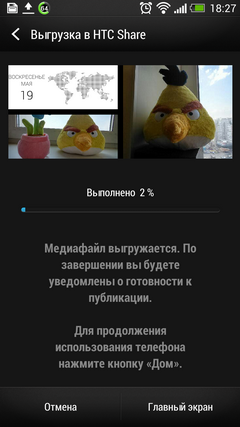
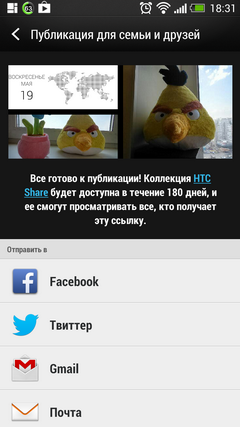
Perhaps, it is a sin not to share such unforgettable impressions with friends, and in this case one more HTC Share service is provided. Once again, checking the availability of the necessary videos and photos in the collection, after a short time you get a video uploaded to the site, which can be shared in any other application or social network.

To be honest, this independence is alarming at first, but it is worth trying the algorithms in action, as all doubts dissipate by themselves. Indeed, a lot of work has been done, and the happy owners of the new product can only enjoy using its results.
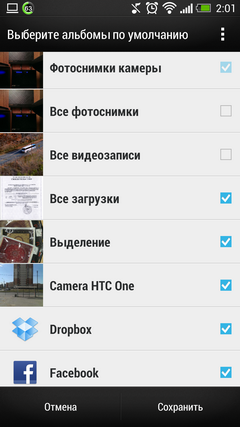

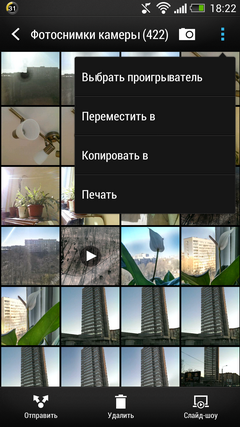
Speaking about other aspects of the camera, it is impossible not to note the instant and very correct operation of the dynamic range expansion algorithm. Not only that the speed of creating HDR-images is now comparable with the usual shutter release, so also the correctness of the selection of semitones raised to a whole new level. HDR photos taken on the HTC One, can boast of natural color reproduction and proper study of sites, often "piled up" due to lack of dynamic range.
However, what's in vain to spread the idea of the tree? We ask you to evaluate the examples of images, among which are macrophotographs, landscapes, HDR-photos and just daily sketches. And without automatically glued seamless panorama has not done.



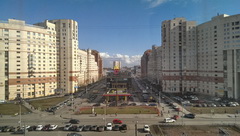


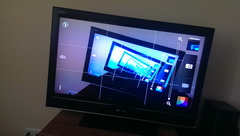
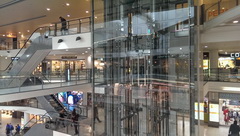
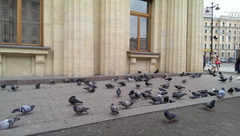

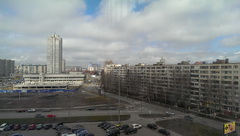
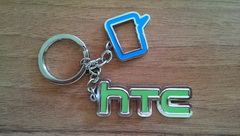

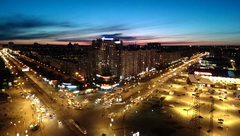
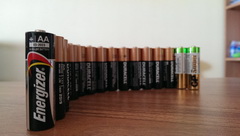





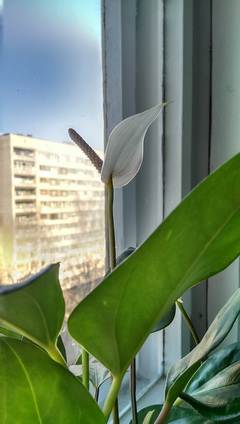
In addition, we made several compilations, comparing the novelty not only with "classmates", but with such heavy artillery as a SLR camera. The results were not long in coming, and the “one” once again surprised me, proving that the point is not at all in the number of megapixels, as it was considered to be for a long time.

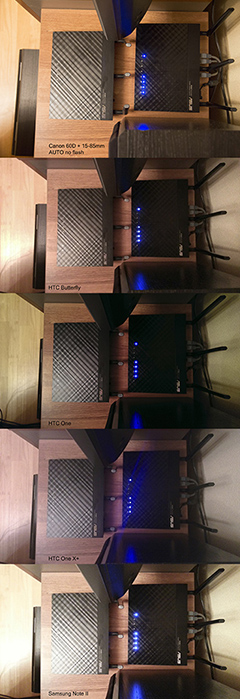
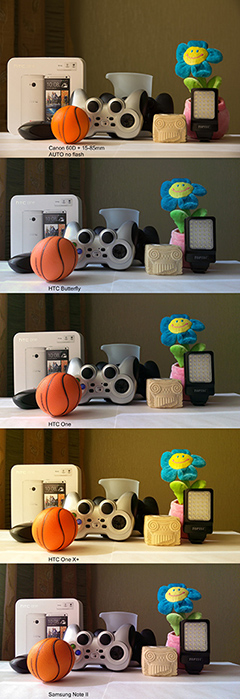

The front camera, by the way, is also not deprived of attention. With a resolution of 2.1 MP, she easily takes photos and shoots video in FullHD, and HDR support for it is also declared.


Example video from the front camera, 1080p: youtu.be/KNBJZ-4sBiA .
With the acquisition of images figured out, it's time to go to their editing. This can be done either immediately after the shooting, or at any time using the Gallery toolkit. For images taken in Zoe mode, not only the standard set of options for framing, resizing or making light adjustments is supported, but also much more interesting modifications.

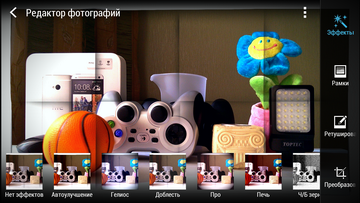
In particular, due to the presence of an impressive selection of frames, the phone is able to remove unnecessary elements from the frame, track a successful facial expression, or take an action shot - a picture with the same object captured several times as it is in the field of view of the lens.
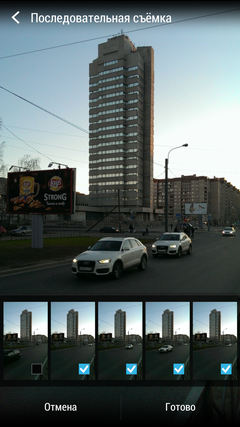

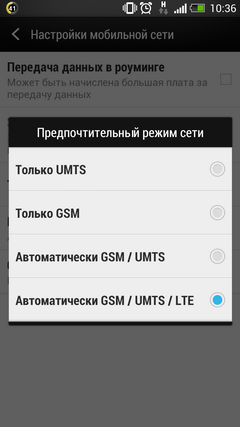
All that is required is to select a snapshot, edit mode and a point in time. The result, as expected, can be instantly shared on social networks and other sources, and support for LTE networks, including their Russian range, will make the process even faster.
To touch the charms of the next generation of wireless communication, it is enough to replace the SIM card with a special microUSIM analog with LTE support and be a subscriber of MegaFon OJSC. Judging by eyewitness accounts, in the Moscow region with automatic switching between the ranges is done without delay, and in the presence of LTE coverage, the phone selects the fastest network. During testing, 4G on the territory of St. Petersburg discovered a number of technical problems, but the representatives of the operator promised to eliminate them in the very near future.



Even in residential areas and residential buildings, the speed reached 15–20 megabits per second, and in open areas exceeded these values. Impressions of using the mobile Internet at such speeds are fundamentally different from the usual browsing and viewing news feeds over 3G. Hundreds of new messages and records are downloaded instantly, and adding your own images or videos to the never-ending whirl of information becomes a matter of seconds.
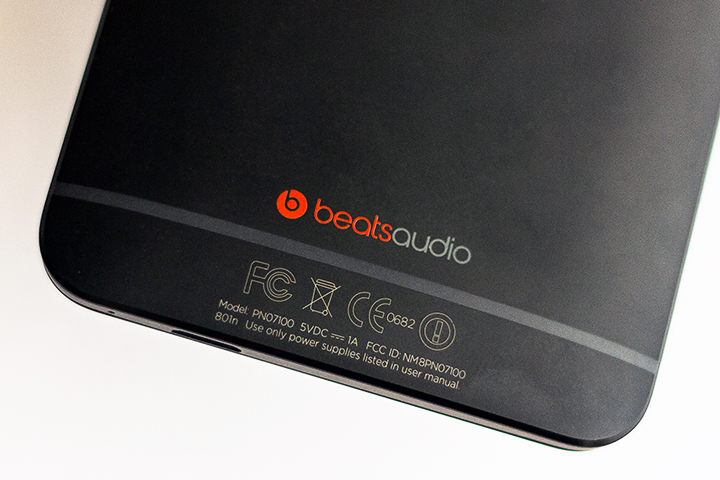
It is logical to ask a question about power consumption in this mode, and HTC One is happy to answer it. The scenario included using the phone as a Wi-Fi hotspot for distributing 4G Internet, regular calls, updating information in accounts and, of course, recording what is happening in dozens and hundreds of photos.

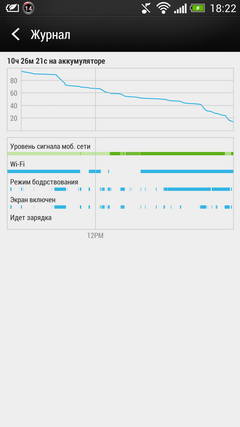
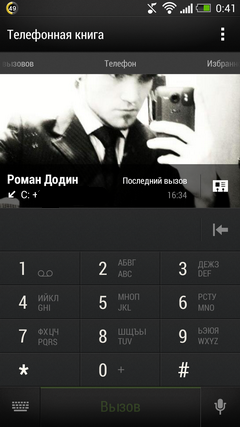
In such a scenario, you can count on a standard day of battery life, and if you replace the resource-intensive Wi-Fi routing by listening to music, then the device will definitely last until the deep evening, or even until tomorrow's lunch is enough.
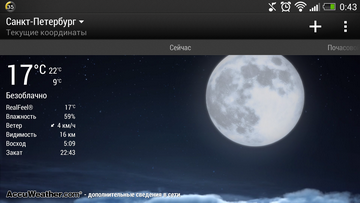
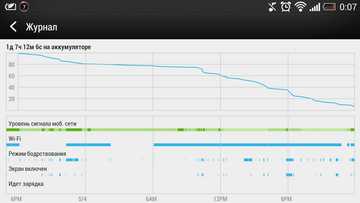
Finally, I would like to note that talking on the HTC One is a pleasure. Not the last role in this was played by the presence of the Sense Voice noise cancellation system, which includes an additional microphone on the rear panel. Its purpose is to cut off external noise, bringing to the addressee only your own voice, not distorted by any external factors. And one of the speakers, which is simply not equal in modern realities, will perfectly cope with the transmission of your interlocutor's voice, allowing you to discover in a new way such familiar process as talking on a mobile phone.
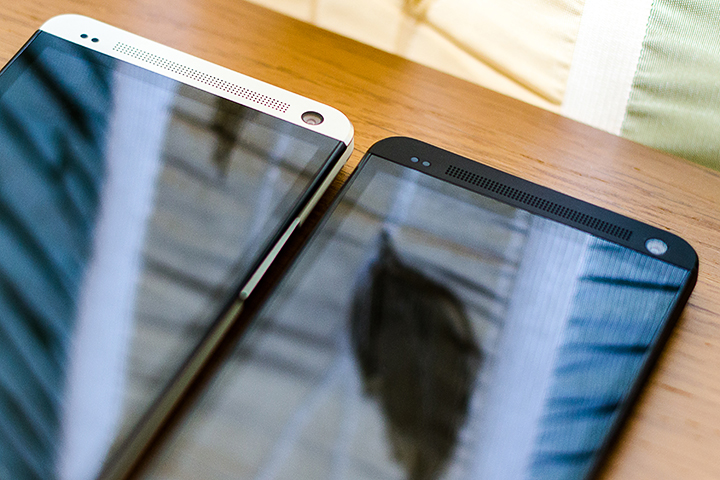
What is the HTC One? A work of industrial design, a fusion of technology and software solutions, a camera and a camcorder for every day? In the end, just a great phone and an indispensable assistant? All these definitions are fair, but it will not be possible to find an exhaustive option, because the possibilities of modern smartphones are truly endless.
Brief specifications of HTC One are given in the following table:
NTS engineers work tirelessly to improve the software, and smartphones that are already released regularly receive minor updates to correct errors and improve usage experience. In particular, at the moment the most current official firmware is version 1.29, and all conclusions about the quality of the implementation of built-in functions will be valid for it.

')
First impressions of using HTC One were only positive. Of course, the early model can be forgiven for much, but even the pre-release unit did not seek to expend credit. With the release of the market and the beginning of official sales, it became finally clear that this is all the same interesting and original smartphone, worthy of close attention.

So, what lies behind the beautiful contours, practical metal body and a gorgeous 1080p display? In addition to the familiar to you filling, consisting of CPU Snadragon 600 @ 1.7 GHz, GPU Adreno 320 and 2 GB RAM, the device boasts a radically updated interface HTC Sense 5.0, which complements the Android OS 4.1.2.

Frankly speaking, at first the innovations may seem unusual, and the traditional scenarios for using desktops are turned upside down, but if you only get a little inspiration from the developers' philosophy, everything falls into place. After all, a modern smartphone is not at all a tool for making and receiving calls, but a universal terminal for accessing the entire diversity of data around us every hour.

New NTS services are aimed precisely at keeping the distance from the user to the content to a minimum, without bothering him to “pull” the desired widgets to the desktops, adjust their size and other actions. As you probably guessed, this is a brand news feed HTC BlinkFeed. If the additional consumption of cellular traffic is undesirable - it is enough to transfer BlinkFeed to the update mode exclusively via Wi-Fi, and the set of news feeds can always be reconsidered. To return to the beginning with the brand clock widget and a beautiful weather icon, just double tap on the status bar. In the end, the start screen easily switches to the traditional desktop, if for some reason your preferences do not converge in favor of the new service.

In addition to the customizable BlinkFeed, the list of sources depends on the region of residence, there are extremely interesting Zoe and HTC Share services on the HTC arm, whose work is based on the active use of the built-in camera.

Recently, the question often arises: why "ultra-pixels"? The fact is that the matrix pixels that are enlarged almost twice can capture up to 3.3 times more light, guaranteeing extremely interesting results in poor light. Despite the fact that the size of the back-illuminated sensor remained within the framework of the usual 1/3 ”, an increase in the pixel size to 2 μm makes itself felt, and the world's leading publications have already confirmed the impressive results.



To reduce the effects of the inevitable “shake” when shooting with hands, the optical system of the HTC One is supplemented with an image stabilizer (OIS), so that you can not worry about the clarity of images, even in low light.



The camera interface complies with time-honored traditions, but individual items are striking and captivate with their novelty. In particular, One can record HDR video in 1080p quality at speeds of up to 30 frames per second, while HD movies can increase the frame rate to 60. The updated ImageChip 2 image processor is responsible for video encoding.
As in previous models, there is a slow-motion shot with a reduced output resolution, but it is much more interesting to shoot video in an extended dynamic range. In the end, it’s not embarrassing to bring such videos to the big TV screen, and the difference with the usual shooting mode, especially in backlit conditions, will not slow down affecting perception.

We attach examples of clips obtained using various shooting modes:
Main camera, 1080p @ 30 FPS: youtu.be/URXlviWzC-Q
Main camera, 1080p HDR @ 30 FPS: youtu.be/T2cBlaPNaeQ
Main camera, 720p @ 60 FPS: youtu.be/6kt4qZKJEJc
It should be noted the high quality of audio recording, possible due to the presence of two microphones and the subsequent program processing of the incoming sound. Perhaps, with the help of HTC One, you can record concerts as well, without subsequently experiencing frustration from overloads and wheezing on the audio track. Nevertheless, even the highest quality video does not enjoy such popularity as a regular photo. A good snapshot is easier to do, it takes up less space, and digital photography is much easier to share with friends.

But sometimes there are moments that can be displayed only in motion. It was for such a case that the technology HTC Zoe was introduced, which allows literally “reviving” your photos, and with them - moments of life. To activate the Zoe mode, just press a separate button on the phone screen in the viewfinder mode and start the shooting process. In just a few seconds, the phone will capture 20 static frames and record a three-second video in 1080p-quality, linking everything that happens into a single and harmonious scene.


What is remarkable about this approach? Now you don’t need to force the burst mode and hold your finger on the shutter button (although this feature is also present). It is enough to choose what you would like to perpetuate, and the phone will do the rest. Moreover, a large amount of the original photo and video material will allow you to turn around at the editing stage, but this is a topic for another conversation.



In order not to embarrass the user with a couple dozen of identical photos, all the pictures and the accompanying videos are automatically grouped in the standard Gallery application. Most of all it looks like a newspaper with live photos - an essential attribute of popular books about the boy wizard. Moreover, if you abstract from the usual albums and switch to the “Events” view, the HTC One will combine all your forays and adventures according to the shooting dates, without forgetting to display geotag data on the map.


The logical end of the process are the colorful videos created by the phone without your participation. If necessary, the composition of the source data can be set manually, but sometimes it is much more pleasant to trust the clever mechanism that magically makes up a fancy mosaic of videos, pictures and special effects, and all this with great music!



Perhaps, it is a sin not to share such unforgettable impressions with friends, and in this case one more HTC Share service is provided. Once again, checking the availability of the necessary videos and photos in the collection, after a short time you get a video uploaded to the site, which can be shared in any other application or social network.

To be honest, this independence is alarming at first, but it is worth trying the algorithms in action, as all doubts dissipate by themselves. Indeed, a lot of work has been done, and the happy owners of the new product can only enjoy using its results.



Speaking about other aspects of the camera, it is impossible not to note the instant and very correct operation of the dynamic range expansion algorithm. Not only that the speed of creating HDR-images is now comparable with the usual shutter release, so also the correctness of the selection of semitones raised to a whole new level. HDR photos taken on the HTC One, can boast of natural color reproduction and proper study of sites, often "piled up" due to lack of dynamic range.
However, what's in vain to spread the idea of the tree? We ask you to evaluate the examples of images, among which are macrophotographs, landscapes, HDR-photos and just daily sketches. And without automatically glued seamless panorama has not done.





















In addition, we made several compilations, comparing the novelty not only with "classmates", but with such heavy artillery as a SLR camera. The results were not long in coming, and the “one” once again surprised me, proving that the point is not at all in the number of megapixels, as it was considered to be for a long time.




The front camera, by the way, is also not deprived of attention. With a resolution of 2.1 MP, she easily takes photos and shoots video in FullHD, and HDR support for it is also declared.


Example video from the front camera, 1080p: youtu.be/KNBJZ-4sBiA .
With the acquisition of images figured out, it's time to go to their editing. This can be done either immediately after the shooting, or at any time using the Gallery toolkit. For images taken in Zoe mode, not only the standard set of options for framing, resizing or making light adjustments is supported, but also much more interesting modifications.


In particular, due to the presence of an impressive selection of frames, the phone is able to remove unnecessary elements from the frame, track a successful facial expression, or take an action shot - a picture with the same object captured several times as it is in the field of view of the lens.



All that is required is to select a snapshot, edit mode and a point in time. The result, as expected, can be instantly shared on social networks and other sources, and support for LTE networks, including their Russian range, will make the process even faster.
To touch the charms of the next generation of wireless communication, it is enough to replace the SIM card with a special microUSIM analog with LTE support and be a subscriber of MegaFon OJSC. Judging by eyewitness accounts, in the Moscow region with automatic switching between the ranges is done without delay, and in the presence of LTE coverage, the phone selects the fastest network. During testing, 4G on the territory of St. Petersburg discovered a number of technical problems, but the representatives of the operator promised to eliminate them in the very near future.



Even in residential areas and residential buildings, the speed reached 15–20 megabits per second, and in open areas exceeded these values. Impressions of using the mobile Internet at such speeds are fundamentally different from the usual browsing and viewing news feeds over 3G. Hundreds of new messages and records are downloaded instantly, and adding your own images or videos to the never-ending whirl of information becomes a matter of seconds.

It is logical to ask a question about power consumption in this mode, and HTC One is happy to answer it. The scenario included using the phone as a Wi-Fi hotspot for distributing 4G Internet, regular calls, updating information in accounts and, of course, recording what is happening in dozens and hundreds of photos.



In such a scenario, you can count on a standard day of battery life, and if you replace the resource-intensive Wi-Fi routing by listening to music, then the device will definitely last until the deep evening, or even until tomorrow's lunch is enough.


Finally, I would like to note that talking on the HTC One is a pleasure. Not the last role in this was played by the presence of the Sense Voice noise cancellation system, which includes an additional microphone on the rear panel. Its purpose is to cut off external noise, bringing to the addressee only your own voice, not distorted by any external factors. And one of the speakers, which is simply not equal in modern realities, will perfectly cope with the transmission of your interlocutor's voice, allowing you to discover in a new way such familiar process as talking on a mobile phone.

What is the HTC One? A work of industrial design, a fusion of technology and software solutions, a camera and a camcorder for every day? In the end, just a great phone and an indispensable assistant? All these definitions are fair, but it will not be possible to find an exhaustive option, because the possibilities of modern smartphones are truly endless.
Brief specifications of HTC One are given in the following table:
| OS | Android 4.1.2, Sense 5.0 |
| Sizes, mm | 137.4 x 68.2 x 9.3 |
| Weight, gr | 143 |
| Display | SLCD3 Display 4.7 '' FullHD 1080p, 468 ppi |
| CPU | Qualcomm APQ8064T Snapdragon 600 @ 1.7 GHz |
| GPU | Adreno 320 |
| Ram | 2 GB |
| Memory | 32 GB (26 GB available to the user) |
| Network | GSM / GPRS / EDGE: 850/900/1800/1900 MHz HSPA / WCDMA: Europe / Asia 850/900/1900/2100 MHz LTE: 800/1800/2600 MHz |
| Sensors | Gyroscope, accelerometer, position sensor in space, light sensor |
| Interfaces | Bluetooth 4.0 with AptX support, Wi-Fi 802.11b / g / n, GPS / GLONASS, NFC, DLNA USB with MHL support, custom infrared transmitter |
| Main camera | UltraPixel 4 MP, ImageChip 2, autofocus, LED flash, f / 2.0 BSI, 28 mm Record FullHD-video (1080p), including HDR @ 30 fps, 720p @ 60 fps, slow motion |
| Front-camera | 2 MP, autofocus, HDR support, 1080p video recording @ 30 fps |
| Sound | Beats Audio, front stereo speakers with HTC BoomSound technology Noise-canceling microphone |
| Battery | Li-Pol 2300 mAh |
Source: https://habr.com/ru/post/181105/
All Articles